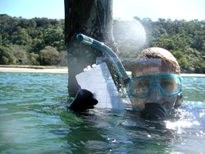Department of Biological Sciences
|
Our laboratory studies how marine animals cope with environmental stressors like pollution, temperature and salinity fluctuations, competition and infection. We're showing that marine invertebrates have novel systems to maintain homeostasis in the face of environmental stress, and that these systems can be exploited to provide innovative solutions to problems in aquaculture, fisheries and environmental management. The main focus of our research is the relationship between infectious disease and the immune system.
Currently we are studying:
Our interest in highly variable gene systems has also led us to investigate:
In the future, we want to use our expertise in cutting edge techniques like proteomics to identify genes that respond to changes in the marine environment, and to exploit those genes in targeted approaches for environment management. We work at two facilities in Sydney ...our main laboratory on the Macquarie University campus and the Sydney Harbour Institute of Marine Science (SHIMS) on the shore of Sydney Harbour at Chowder Bay .
|
||||||||||
Our People |
||||||||||
Publications |
||||||||||
|
||||||||||

